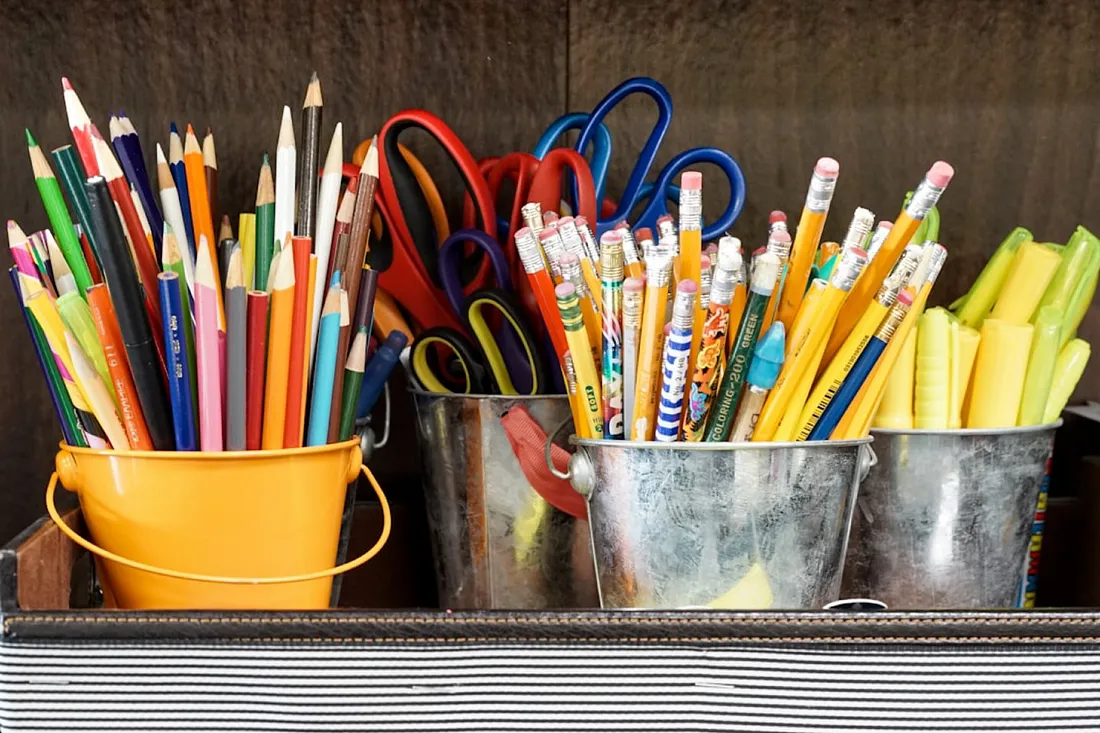Sustainable School Supplies
Overall, while the back-to-school season is a stressful time for most, it’s also stressful for the environment. Consumers tend to purchase more school supplies than are necessary and end up discarding items that they never needed in the first place. This trend has contributed to excessive landfill waste over the past decade and will only continue to worsen the condition of our environment if nothing is done to mitigate the issue.

You wake up in a nervous sweat, heart pounding, the sound of your alarm going off. Don’t worry, it’s just the start of another amazing school year!
August is under way and September is swiftly approaching, and, with that, millions of people around the globe are getting ready to go back to school. One look online and you’ll find the world web in a frenzy over preparation for the new school year from shopping videos, and pictures of trendy outfits, to ads convincingly luring many into buying back-to-school “essentials.” Unfortunately, considering many students are able to purchase back-to-school materials online, more often than not people fail to take eco-friendliness into consideration when making their purchases.
Luckily, in this blog, you will learn about why the overconsumption of school supplies is a significant problem and something you should keep in mind while shopping for the upcoming school season.
The Supply Rush

To understand why overconsumption of school supplies is a relevant issue, one must understand how a lot of these supplies end up in landfills. Every summer before the school year starts, students are tasked with gearing up for the school year by stocking up on supplies. Common school supplies include backpacks, lunch bags, pencils, pens, markers, folders, and notebooks, with some classes like art requiring additional supplies.
According to Greenbinz, 77% of school supplies are not put to use, with most people spending an average of $85 dollars on school supplies alone each year. With the variety of supplies that most shops offer, it is easy to be distracted by all the bright colors and designs of many of these products. Consumers often overspend and purchase items that they don’t truly need just because they look pretty and new. This results in unused products being chucked in the trash a few months into the school year.
The Issue with Overconsumption

We only have one Earth. Although getting rid of a few unused items may not seem like a big deal, all these materials add up quickly when millions of people dispose of this “trash” and it makes its way to landfills. Many school items such as folders, binders, and pencil sharpeners, are made of plastic and never truly decompose once discarded in landfills.
For example, many choose plastic folders for organizing papers as they are more heavy-duty than paper ones. However, this also means they take longer to decompose in landfills. Plastic folders mainly consist of PVC which, according to Business Waste Management and Collection, takes approximately 450 years to decompose. To make matters worse, the production of PVC includes chlorine, an element that is a major contributor to the thinning of the ozone layer.
Online Marketing

Part of the problem when it comes to the overconsumption of school supplies is internet marketing. Over the past decade, the use of the internet for marketing has skyrocketed. Consumers are creating promotional videos of themselves wearing their new backpacks or breaking in their new pens and posting them on social media. These videos often entice students to buy those same school supplies, contributing to an endless cycle of overconsumption.
In addition to consumers marketing their freshly-purchased supplies, the companies that produce these supplies also partake in their fair share of marketing. Most suppliers will invest a large sum of money in creating ads and ensuring they reach the right audience (students, that is). Many consumers can’t resist the allure of an ad with a crisp new notebook front and center. While the internet likely will continue to expel an increased amount of ads for unnecessary items, there are a few ways to prevent yourself from caving in!
Combatting Overconsumption

Although buying supplies for school is inevitable, it is important to shop in moderation and consider what items are truly needed. A good way to keep unnecessary supplies from being thrown away after collecting dust for months is to enter shops with intention. This means taking the time to make a list of all the items that you need and sticking to that list in order to prevent impulse purchases.
Another way to help preserve the environment is to reuse school supplies from previous years. Even though many people today tend to obsess over purchasing new school supplies at the start of each year, it doesn’t mean that what you already have isn’t valuable or in good condition. In addition, gently used items in good condition can always be passed down to others such as younger siblings and neighbors, or donated to schools that can pass them along to students from low-income families.
A more involved way to protect our planet during the upcoming school year is to be more conscious about the companies that make the supplies as well as the materials they are made of. There are various companies that give back to the environment and work to reduce their carbon footprint including EarthHero, Better World Books, Crayola, and Stasher Bags. By educating yourself about who makes the products you buy, you are making an effort to reduce the harmful impacts of overconsumption.
Recap
Overall, while the back-to-school season is a stressful time for most, it’s also stressful for the environment. Consumers tend to purchase more school supplies than are necessary and end up discarding items that they never needed in the first place. This trend has contributed to excessive landfill waste over the past decade and will only continue to worsen the condition of our environment if nothing is done to mitigate the issue. This fall, try donating old school supplies to a friend or buying school supplies from a company that uses recycled plastics to make their products. Remember, even the little changes do make a difference.
